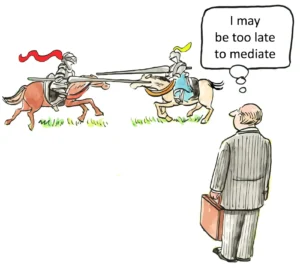Romeo and Juliet Laws Explained: Age of Consent and Legal Protections for Young Couples
The legal landscape surrounding teenage relationships and sexual activity among young people has long been a complex and contentious issue. At the heart of this matter lie Romeo and Juliet laws, which aim to provide legal protections for young couples engaged in consensual sexual relationships when one or both parties are below the age of consent. These laws, named after Shakespeare’s young lovers, recognize the reality of adolescent sexuality while attempting to shield teenagers from the harsh consequences of statutory rape charges that could otherwise apply.
Romeo and Juliet laws typically create exceptions to statutory rape offenses when the age difference between the parties involved is small, usually between 2 to 4 years. The intent behind these provisions is to prevent the criminalization of what many consider to be normal adolescent behavior. Without such laws, a teenager could face severe legal repercussions, including potential registration as a sex offender, for engaging in consensual sexual activity with a peer who is just below the age of consent.
The implementation of Romeo and Juliet laws varies significantly across jurisdictions. In the United States, approximately half of the states have enacted some form of these laws, each with its own specific criteria and protections. For instance, in Texas, the law allows for a 3-year age gap between partners, provided the younger party is at least 14 years old. Florida’s law is more expansive, permitting a 4-year age difference and applying to individuals between 16 and 23 years old.
It is crucial to understand that Romeo and Juliet laws do not legalize all sexual activity between minors or between a minor and a young adult. Instead, they provide a legal defense or mitigation in specific circumstances. The laws are designed to address situations where both parties are close in age and the relationship is consensual, distinguishing these cases from those involving exploitation or significant age disparities.
The age of consent plays a pivotal role in the application of Romeo and Juliet laws. This is the age at which an individual is legally considered capable of consenting to sexual activity. In the United States, the age of consent ranges from 16 to 18, depending on the state. Romeo and Juliet laws often come into play when one party is below the age of consent but within a specified age range of their partner.
For example, in a state where the age of consent is 16, a 15-year-old and a 17-year-old in a consensual sexual relationship might be protected under a Romeo and Juliet law. However, if the older partner were 20, the law would likely not apply, and statutory rape charges could be pursued. This nuanced approach aims to balance the protection of minors from exploitation with the recognition that not all age-gap relationships between young people are inherently exploitative.
The legal rationale behind Romeo and Juliet laws stems from the understanding that strict enforcement of statutory rape laws can lead to unjust outcomes in cases involving peers. The criminal justice system’s traditional approach to statutory rape operates on the premise that minors below the age of consent cannot legally agree to sexual activity, regardless of the circumstances. This absolute stance, while intended to protect minors, can result in severe consequences for young people engaged in mutual, non-exploitative relationships.
Romeo and Juliet laws address this issue by introducing a degree of proportionality and context to statutory rape cases. These laws recognize that there is a qualitative difference between a relationship between two teenagers and one between a teenager and a significantly older adult. By providing legal protections or reduced penalties in cases where the age gap is small, these laws aim to prevent the lifelong stigma and hardship that can result from a statutory rape conviction and sex offender registration.
However, the implementation and effectiveness of Romeo and Juliet laws are not without controversy. Critics argue that these laws can sometimes be too lenient, potentially allowing for the exploitation of younger teenagers by those just a few years older. There are also concerns about the arbitrary nature of age cutoffs and whether they adequately reflect the maturity and power dynamics in adolescent relationships.
Another point of contention is the application of Romeo and Juliet laws to same-sex relationships. In some jurisdictions, these laws have been written or interpreted in ways that do not provide equal protection to LGBTQ+ youth. This disparity has led to calls for reform to ensure that Romeo and Juliet laws are applied equitably regardless of sexual orientation or gender identity.
The legal landscape surrounding Romeo and Juliet laws is further complicated by the intersection with other areas of law, such as child pornography statutes. In the digital age, where sexting and the exchange of explicit images are common among teenagers, the legal system faces new challenges. A teenager who sends or receives explicit images of a minor peer could potentially face child pornography charges, even if the sexual relationship itself is protected under Romeo and Juliet laws. This disconnect highlights the need for a comprehensive review of laws affecting adolescent sexuality in the context of modern technology.
The application of Romeo and Juliet laws also raises questions about the role of parental consent and involvement. In some cases, parents may object to their child’s relationship, even if it falls within the protection of Romeo and Juliet laws. This can create complex legal and ethical dilemmas, particularly in cases where parents seek to press charges against their child’s partner despite the relationship being consensual and within the age parameters set by law.
Judicial discretion plays a significant role in the application of Romeo and Juliet laws. Judges often have the authority to consider the specific circumstances of each case, including the nature of the relationship, the maturity of the parties involved, and any power imbalances that may exist. This discretion allows for a more nuanced approach to justice but can also lead to inconsistencies in how the law is applied across different cases and jurisdictions.
The impact of Romeo and Juliet laws extends beyond the immediate legal consequences for the individuals involved. These laws can have significant implications for sex education and public health policies. By acknowledging the reality of adolescent sexual activity, Romeo and Juliet laws may encourage more open discussions about safe sex practices and consent among young people. However, there is also concern that these laws could be seen as condoning or encouraging underage sexual activity, potentially conflicting with abstinence-based education programs.
From a public health perspective, Romeo and Juliet laws can influence how young people access sexual health services. In some cases, the fear of legal repercussions may deter teenagers from seeking important health services, such as STI testing or contraception. Romeo and Juliet laws, by reducing the legal risks associated with consensual teenage relationships, may help to remove some of these barriers to healthcare access.
The international perspective on Romeo and Juliet laws provides additional context to this complex issue. Different countries have adopted varying approaches to addressing consensual sexual activity among young people. Some nations have implemented close-in-age exemptions similar to U.S. Romeo and Juliet laws, while others have opted for different legal frameworks. Comparing these different approaches can provide valuable insights into the most effective ways to balance the protection of minors with the recognition of adolescent autonomy.
In Canada, for example, the age of consent is generally 16, but there are close-in-age exemptions that allow for consensual sexual activity between young people. These exemptions permit 14 and 15-year-olds to engage in sexual activity with partners less than five years older, and 12 and 13-year-olds with partners less than two years older. This tiered approach attempts to account for the different stages of adolescent development and maturity.
The United Kingdom has taken a different approach. While the age of consent is 16, prosecutors have discretion in deciding whether to bring charges in cases involving consensual activity between young people of similar ages. This prosecutorial discretion allows for a case-by-case assessment, considering factors such as the relative ages of the parties involved and whether there is any evidence of exploitation or coercion.
In some European countries, the legal approach to adolescent sexuality focuses more on the concept of sexual self-determination rather than strict age limits. For instance, in Germany, while the age of consent is 14, there are provisions that protect young people up to the age of 18 from exploitation by adults in positions of trust or authority. This nuanced approach attempts to balance the recognition of adolescent sexuality with protections against abuse and exploitation.
The debate surrounding Romeo and Juliet laws often intersects with broader discussions about juvenile justice reform. There is growing recognition that the criminal justice system’s approach to juvenile offenders should prioritize rehabilitation and consider the unique developmental characteristics of adolescents. In this context, Romeo and Juliet laws can be seen as part of a larger trend towards more age-appropriate and proportionate responses to juvenile misconduct.
The implementation of Romeo and Juliet laws also raises important questions about the role of technology in adolescent relationships and the law’s ability to keep pace with these changes. The prevalence of social media and dating apps has created new avenues for young people to meet and interact, potentially complicating the application of age-of-consent laws and Romeo and Juliet provisions. Lawmakers and courts must grapple with how to apply these laws in cases where relationships are formed or conducted primarily online, potentially crossing state or even national boundaries.
Another important consideration in the discussion of Romeo and Juliet laws is their interaction with mandatory reporting requirements for professionals who work with minors. Teachers, healthcare providers, and counselors are often required by law to report suspected cases of child abuse or exploitation. The existence of Romeo and Juliet laws can create uncertainty about when consensual sexual activity between young people crosses the line into reportable behavior. This ambiguity can place professionals in difficult ethical and legal positions, potentially affecting their ability to provide support and services to young people.
The psychological impact of statutory rape charges on young people is another factor that underscores the importance of Romeo and Juliet laws. The trauma of being labeled a sex offender, even in cases of consensual relationships between peers, can have severe and long-lasting effects on an individual’s mental health, social relationships, and future prospects. Romeo and Juliet laws aim to mitigate these harsh consequences in cases where criminalization may do more harm than good.
However, it is crucial to recognize that Romeo and Juliet laws are not a panacea for all issues related to adolescent sexuality and the law. These provisions do not address the underlying power dynamics that can exist in relationships with age differences, even when those differences fall within the protected range. There is ongoing debate about whether age-gap provisions adequately account for the potential for exploitation or whether they may inadvertently provide cover for abusive relationships.
The implementation of Romeo and Juliet laws also raises questions about the role of consent education in schools and communities. While these laws provide legal protections in certain circumstances, they do not negate the importance of comprehensive education about consent, healthy relationships, and sexual health. In fact, the existence of these laws may create opportunities for more nuanced discussions about these topics, acknowledging the reality of adolescent sexual activity while emphasizing the importance of mutual respect and informed decision-making.
From a legal perspective, the existence of Romeo and Juliet laws highlights the challenges of crafting legislation that adequately addresses the complexities of human behavior and relationships. These laws attempt to introduce nuance into an area of law that has traditionally relied on bright-line rules. This shift towards more context-dependent legal standards reflects a broader trend in many areas of law, where rigid rules are being replaced or supplemented by more flexible approaches that allow for consideration of individual circumstances.
The debate surrounding Romeo and Juliet laws also touches on fundamental questions about the purpose of criminal law and the appropriate role of the state in regulating personal relationships. Critics of these laws argue that they represent an unwarranted intrusion into private matters and that the state should not be in the business of policing consensual relationships between young people. Proponents, on the other hand, contend that these laws serve an important protective function, shielding young people from the harsh consequences of laws that were primarily designed to target predatory behavior by adults.
The implementation of Romeo and Juliet laws has significant implications for the criminal justice system beyond just the individuals directly involved in these cases. These laws can affect prosecutorial discretion, plea bargaining practices, and the allocation of law enforcement resources. By providing a legal framework for distinguishing between exploitative relationships and those between peers, these laws can help focus criminal justice resources on cases that involve genuine exploitation or abuse.
As society continues to grapple with changing norms around sexuality, relationships, and technology, the legal framework provided by Romeo and Juliet laws will likely continue to evolve. Future developments may include more nuanced approaches to age-gap provisions, greater consideration of factors beyond just age difference, and improved integration with other areas of law affecting adolescents and young adults.
In conclusion, Romeo and Juliet laws represent an attempt to navigate the complex terrain of adolescent sexuality and the law. These provisions seek to strike a balance between protecting minors from exploitation and avoiding the criminalization of consensual relationships between young people. While these laws are not without controversy and challenges in implementation, they reflect a growing recognition of the need for more nuanced and proportionate approaches to issues of sexual consent and criminal responsibility among young people. As society continues to evolve, so too will the legal frameworks that govern these sensitive and important issues.
Website citations:
- https://www.justice.gov/criminal-ceos/citizens-guide-us-federal-law-child-sexual-abuse
- https://www.guttmacher.org/state-policy/explore/sex-and-hiv-education
- https://www.aclu.org/other/laws-restricting-teenagers-access-abortion
- https://www.cdc.gov/healthyyouth/data/yrbs/index.htm
- https://www.rainn.org/articles/legal-role-consent
- https://www.childwelfare.gov/pubpdfs/manda.pdf



















